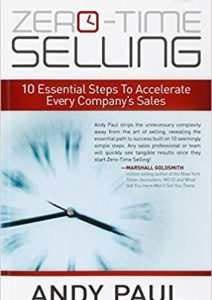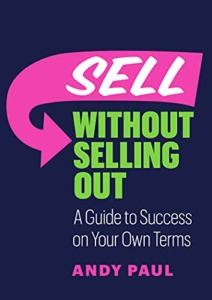If you’ve got an important sales opportunity in the works, you can improve your chance of success by preparing in advance, and visualizing the steps that will lead your prospect to make a purchase decision in your favor.
During a buying cycle, there are very few opportunities to interact with your prospect in a meaningful way. This is a new kind of buyer — they are not purchasing from you based on an old-fashioned sales call. Those days are gone. Prospects are quite savvy about how they make buying decisions, and wasting time on sales calls that don’t offer value — or move the decision-making process ahead — is off the table.
The moral — as in the fable about the prudent Ant who prepared for the winter and the foolish Grasshopper, who did not: Take the opportunity to engage. Leave nothing to chance. Be as totally prepared as you can be.
As an important first step, use a simple visualization technique to improve your odds. For each upcoming sales call (whether in person, on the phone, or online) mentally establish a goal and a desired outcome. Take it further by mentally walking through the steps you will need to take to achieve that outcome.
Sales managers coach this discipline. Use this 3-step exercise to improve your sales results:
1. Picture the desired goal and outcome for the sales call.
Whatever method you’re using — phone call, video chat, in-person — define the goal and outcome you want to achieve. The goal will be defined in terms of the value you deliver that will move the customer closer to a decision. The outcome will be defined in terms of the next steps the customer will take as a result of receiving this value. Write down the goal and outcome to help you formulate the appropriate actions to get you the next step closer to a favorable decision.
2. Mentally walk through the steps, in order.
What are the series of steps you will take to achieve your goal and get the outcome you want for this sales interaction? Visualize how the the sales call will unfold with the customer and picture how you will present your value and the questions you will ask. Write down the specific questions you will need the customer to answer, and practice variations on how you might ask them.
3. Anticipate different answers and follow-up questions.
Visualize the “conditional” (if/then) ways the conversation could go during a call. For example, if the prospect answers your question with answer A, prepare for follow-up question B. If they ask question B, how will you respond? Do this for as many probable combinations as you can. Keep a record of your ideas so you can have it with you in the meeting.
You need to be thoroughly prepared for whatever is likely to occur during a sales call — this gives you a decided advantage before you speak with the prospect. Run through your list, and picture (and practice) your answers.
Still feeling uncertain? Ask a colleague or manager to help you role-play and rehearse important sales calls. You can’t anticipate with 100% accuracy every question the prospect may ask, but your thoughtful exploration of the possibilities will only serve to make your more confident and feel more capable.
Take every advantage you can of the few substantive and meaningful interactions with a buyer. Be prepared to make the most of every sales touch. A sales call is the time for preparation, not improvisation.














